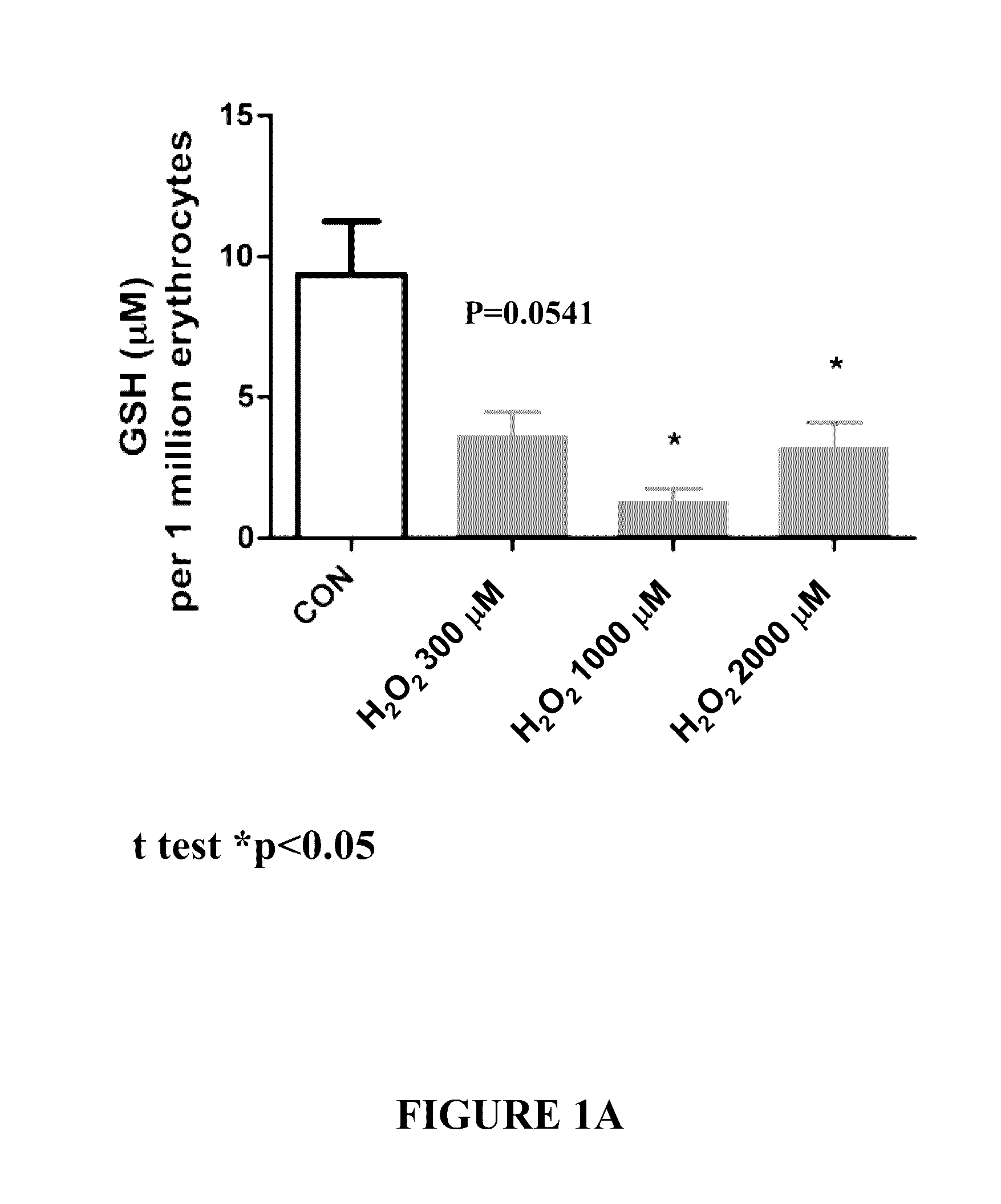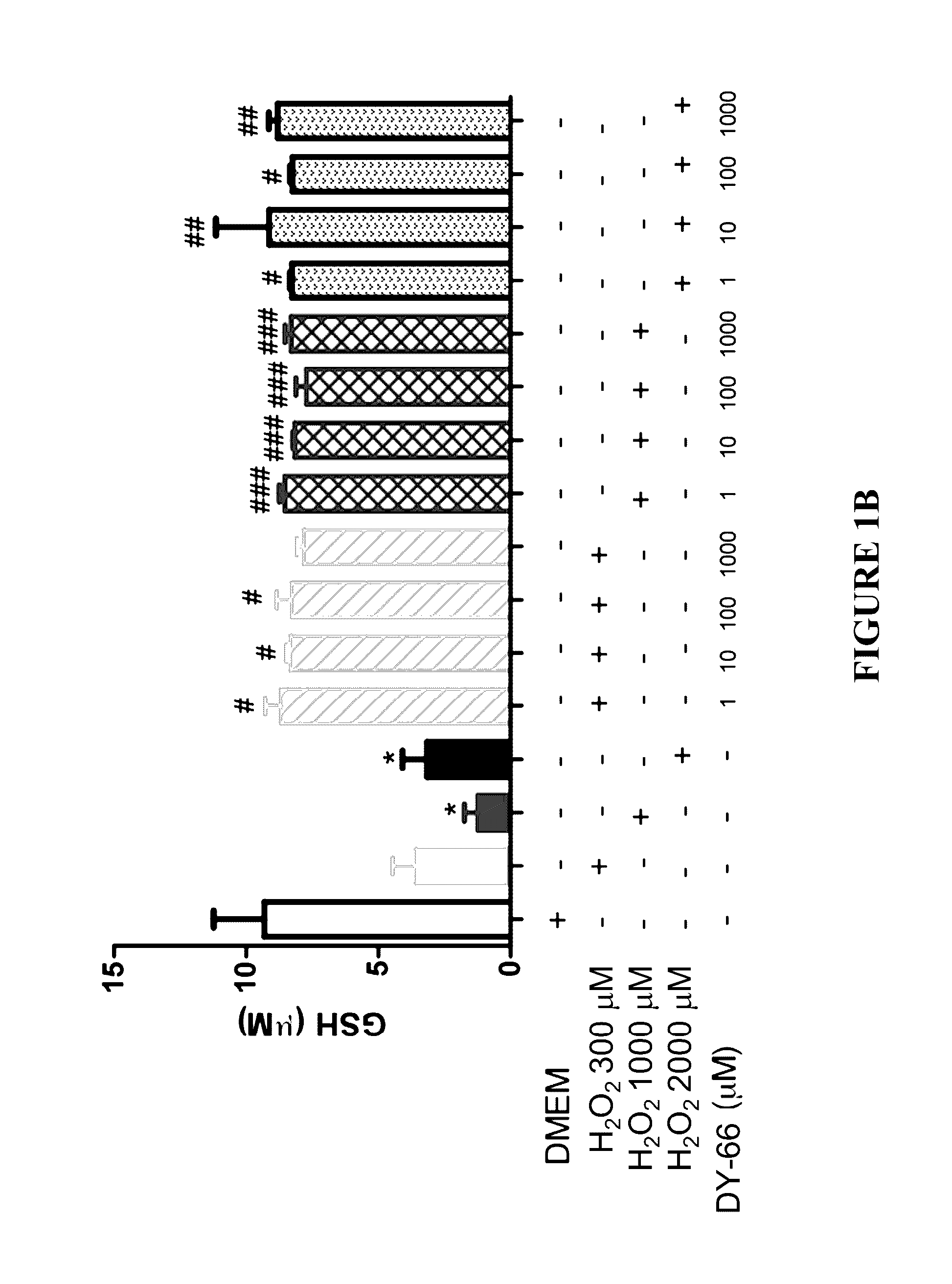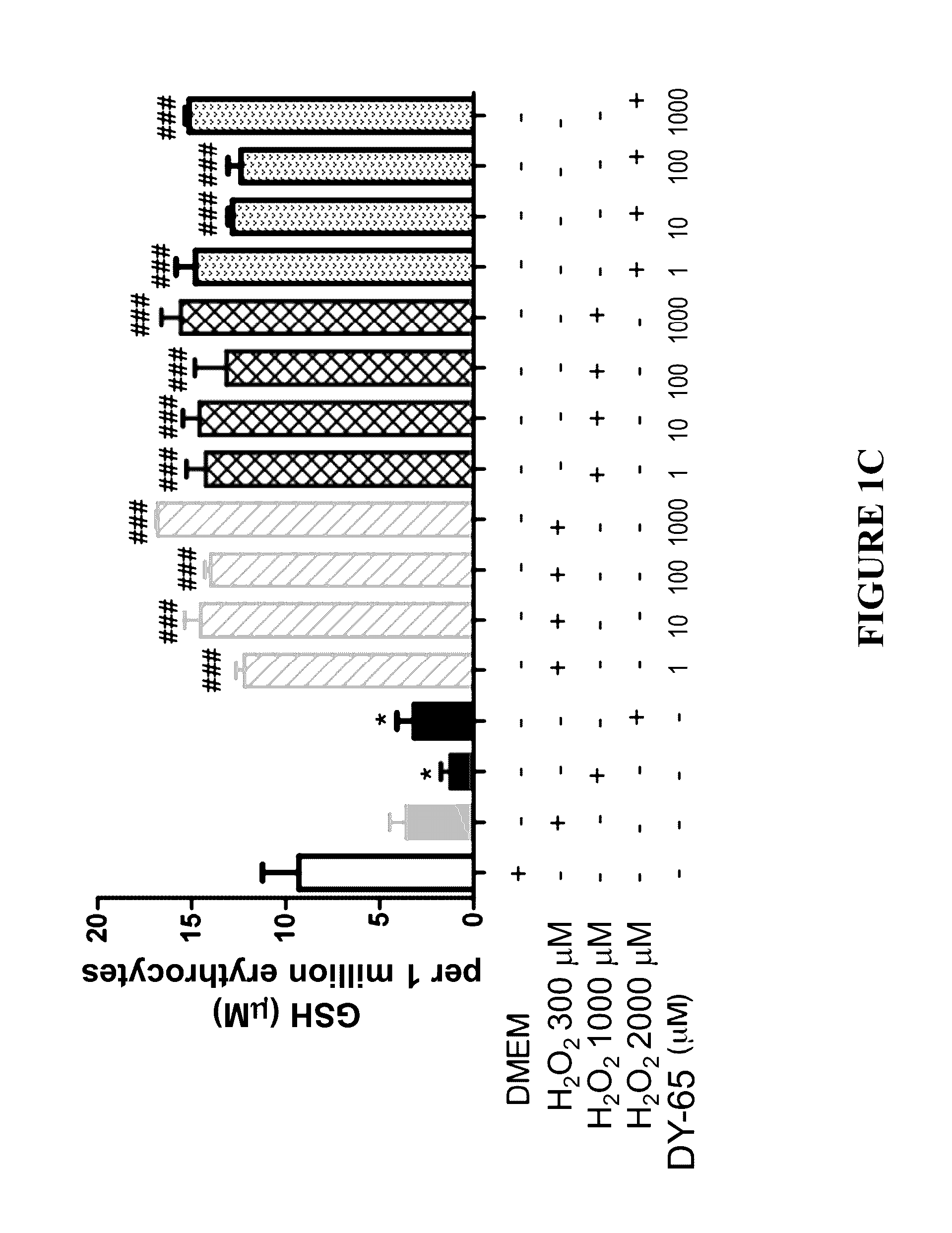Glutathione-elevating compositions and uses thereof
a technology of compositions and glutathione, applied in the field of glutathione-elevating compositions, can solve the problems of adversely affecting the transcription or stability of mrna products, thalassemia is complicated, and the globin chain production is reduced, so as to improve the ability of the peptide to penetrate the skin, and improve the ability of the peptide to penetra
- Summary
- Abstract
- Description
- Claims
- Application Information
AI Technical Summary
Benefits of technology
Problems solved by technology
Method used
Image
Examples
example 1
Effect of Peptides on Glutathione Status in Murine Erythrocytes Subjected to Oxidative Stress
[0262]Peptide Synthesis:
[0263]The following peptides were synthesized by Solid Phase Peptide Synthesis (SPSS) using Fmoc strategy (purity >98%):
[0264]N-acetyl-Cys-Lys-Met-Cys-NH2, designated herein as DY-65 (SEQ ID NO: 4);
[0265]N-acetyl-Cys-βAla-His-Cys-NH2, designated herein as DY-66 (SEQ ID NO: 6); and
[0266]N-acetyl-Cys-Met-Lys-Cys-NH2, designated herein as DY-70 (SEQ ID NO: 5).
[0267]The peptides were prepared by SPSS in which there are repeated cycles of coupling-deprotection. The first stage of the technique consists of peptide chain assembly with protected amino acid derivatives on a polymeric support. The second stage of the technique is the cleavage of the peptide from the resin support with the concurrent cleavage of all side chain protecting groups to give the crude free peptide.
[0268]The free N-terminal amine of a solid-phase attached peptide is first coupled to a single N-protecte...
example 2
Effect of DY-65 on GSH:GSSG Ratio in Murine Erythrocytes Subjected to Oxidative Stress
[0289]The in vitro efficacy of peptide DY-65 in suppressing the decrease in the ratio of GSH to GSSG in murine erythrocytes exposed to hydrogen peroxide was tested.
[0290]Hydrogen Peroxide Induced Oxidative Stress.
[0291]Murine erythrocytes (“Cells”) were prepared by washing freshly harvested whole blood from mice three times in PBS. Cells were resuspended in DMEM at a concentration of 106 per mL. All study conditions were evaluated in triplicate.
[0292]Hydrogen peroxide (200 μM) was utilized to induce redox stress in murine erythrocytes (“Cells”). Prior to exposure to hydrogen peroxide, cells were randomly allocated to the following experimental groups:
[0293]1. Sham (no exposure to hydrogen peroxide; no drug)[0294]a. 2.5 h final incubation
[0295]2. Vehicle control (hydrogen peroxide; no drug)[0296]a. 1.0 h final incubation[0297]b. 1.5 h final incubation[0298]c. 2.0 h final incubation[0299]d. 2.5 h fin...
example 3
In Vitro Effect of the Peptides on Red Blood Cells Obtained from Spherocytosis Patients
[0312]Patients and Study Design:
[0313]Blood samples are obtained from 10 patients with spherocytosis, hereditary or acquired, from a cohort of patients treated in the Pediatric Hematology Unit at Emek Medical Center, Israel.
[0314]The following clinical data are recorded: age, gender, ethnic origin, type of spherocytosis (hereditary or sporadic), and time elapsed since the last blood transfusion and any drug treatment in the last several months.
[0315]Patients age: the study includes children from age 2 years and young adults. Both males and females are included.
[0316]Exclusion criteria: patients after splenectomy are not included in the first phase of the study. An extension study will be considered after analyzing the results.
[0317]Patients who received blood transfusions during 45 days before sampling are also excluded.
[0318]Patients that required drug treatment that included acetyl cysteine in t...
PUM
| Property | Measurement | Unit |
|---|---|---|
| time | aaaaa | aaaaa |
| pH | aaaaa | aaaaa |
| blood disorder | aaaaa | aaaaa |
Abstract
Description
Claims
Application Information
 Login to View More
Login to View More - R&D
- Intellectual Property
- Life Sciences
- Materials
- Tech Scout
- Unparalleled Data Quality
- Higher Quality Content
- 60% Fewer Hallucinations
Browse by: Latest US Patents, China's latest patents, Technical Efficacy Thesaurus, Application Domain, Technology Topic, Popular Technical Reports.
© 2025 PatSnap. All rights reserved.Legal|Privacy policy|Modern Slavery Act Transparency Statement|Sitemap|About US| Contact US: help@patsnap.com



